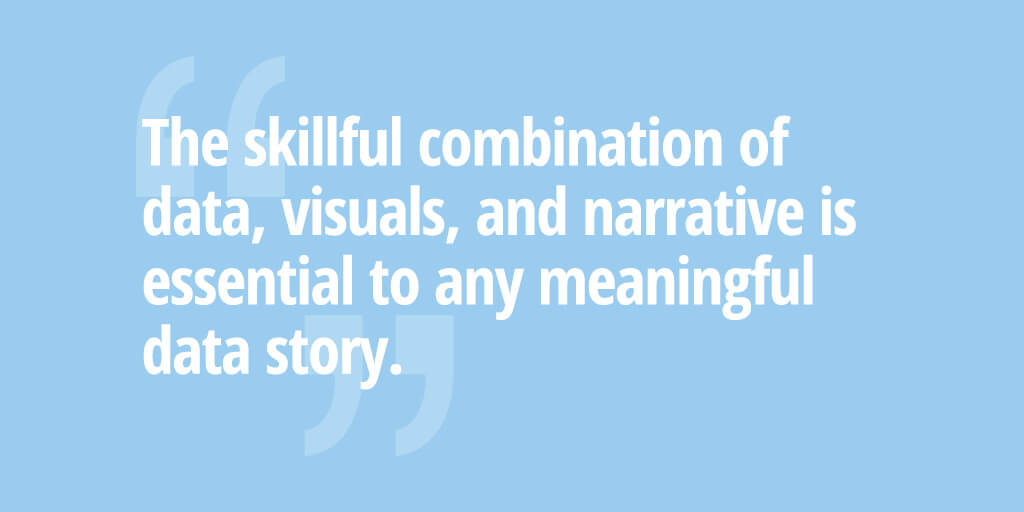Data is playing a larger role in day-to-day business conversations than ever before. The ability to communicate with data is now a necessity for business leaders, frontline employees, and everybody in between. People who may have easily avoided discussing data in the past are finding numbers being thrust upon them. When data is a foreign language to you, it can be frustrating to not understand what’s being said or be able to use it effectively in communications with others. Not being conversant or fluent in data is quickly becoming a liability in today’s fast-moving data economy.

Fortunately, we can turn to a timeless, highly effective form of communication—storytelling—but with a modern data twist. Now instead of illustrations, pictures or film, we can communicate with data by bringing stories to life with compelling data visualizations. For example, the combination of a compelling narrative and insightful data charts can help explain why your sales are down and create urgency to fix problems in your sales channel. Data storytelling isn’t just a skill reserved for analysts or data scientists—it’s one I believe we must all master. Self-service analytics solutions are increasingly placing a wealth of information at people’s fingertips. Now more people are put in a position to formulate and share data stories that can drive action and change.
Even though the field of data storytelling is still relatively new and uncharted, it has become a hot topic in both analytics and business circles. As various people step forward to provide opinions on how to tell data stories, I’ve seen misinformation creep in which—if left unaddressed—could lead aspiring data storytellers astray. I’d like to separate the fiction from the facts by highlighting some of the recent misconceptions about data storytelling I’ve encountered:
Fiction #1: Every data visualization tells a story.
While a story may potentially exist within any data visualization, that doesn’t mean the chart or graph actually communicates it clearly or effectively. Every data story should convey or build up to a main point or idea. A data visualization fails to tell a story when your audience doesn’t clearly understand the central insight or idea that’s being conveyed. Multiple data points in the same data visualization (or across multiple data visualizations) can often compete for attention and create noise. Unless you purposefully draw your audience’s attention to a specific insight or series of insights (the signal), your data visualization won’t support a data story. I’ve seen interactive data visualizations where the author had no intended destination for his or her audience. While these charts may empower audiences to discover their own insights and data stories, they don’t tell a story.

Fiction #2: Data storytelling is only about data visualization.
While data visualizations are often a central focus of data stories, the narrative aspects are equally important to the success of a data story. A story is not just a bunch of pretty pictures—it is an account of a causally related or connected series of events. The narrative elements in a data story provide structure and help to create meaning from an assortment of data points that might otherwise feel quite random. In addition, narrative elements also help your data story to engage your audience and connect with them on an emotional level, which data could never do on its own. The skillful combination of data, visuals, and narrative is essential to any meaningful data story.
**This article was originally published on Forbes.com on July 13, 2016.